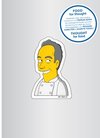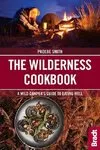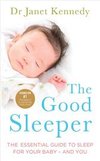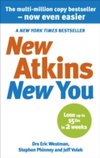
-
 Anglický jazyk
Anglický jazyk
Cosmetics
Autor: Source: Wikipedia
Source: Wikipedia. Pages: 71. Chapters: Perfume, Corpse paint, Foundation, Lipstick, Skin whitening, Mascara, Copper peptide GHK-Cu, Eyes Lips Face, Ingredients of cosmetics, Kohl, Theatrical makeup, Cosmetology, Stain removal, Paula Begoun, Permanent makeup,... Viac o knihe
Na objednávku
19.98 €
bežná cena: 22.20 €
O knihe
Source: Wikipedia. Pages: 71. Chapters: Perfume, Corpse paint, Foundation, Lipstick, Skin whitening, Mascara, Copper peptide GHK-Cu, Eyes Lips Face, Ingredients of cosmetics, Kohl, Theatrical makeup, Cosmetology, Stain removal, Paula Begoun, Permanent makeup, Tilaka, Nail polish, List of cosmetic ingredients, Sindoor, Mesotherapy, Simple Skincare, Eye shadow, International Nomenclature of Cosmetic Ingredients, Prosthetic makeup, Photorejuvenation, Make-up artist, Bindi, Khush Singh, Thanaka, Cold cream, Anti-aging cream, Eyelash extensions, Cosmetic, Toiletry, and Fragrance Association, Lip gloss, Atlantic Coast Media Group, Aveda Institute, Cosmeceutical, Campaign for Safe Cosmetics, Glitter, Cosmetics Directive, Eye liner, MLE, Beauty salon, Whiteness in Japanese culture, Cosmetic camouflage, Airbrush makeup, Primer, Makeover, Period-after-opening symbol, Eyelid glue, Rouge, National Accrediting Commission of Cosmetology Arts and Sciences, Facial prosthetic, Cosmetics advertising, Miessence, Beauty mark, Concealer, Facial toning, Cotton pad, Face powder, BB cream, Bain de Soleil, Unsaponifiable, Lip plumper, Certificate of Formula Compliance, Imedeen, Anal bleaching, Nail buffing, Powder puff, Nasolabial fold, Sea Breeze, Compact, Cosmetic Ingredient Review, Lip liner, Body powder, Veil, PH balanced cosmetic. Excerpt: Perfume (English: , French parfum pronounced: ) is a mixture of fragrant essential oils and aroma compounds, fixatives, and solvents used to give the human body, animals, objects, and living spaces a pleasant scent. The odoriferous compounds that make up a perfume can be manufactured synthetically or extracted from plant or animal sources. Perfumes have been known to exist in some of the earliest human civilizations either through ancient texts or from archaeological digs. Modern perfumery began in the late 19th century with the commercial synthesis of aroma compounds such as vanillin or coumarin, which allowed for the composition of perfumes with smells previously unattainable solely from natural aromatics alone. Etruscan perfume vase shaped like a female head Egyptian scene depicting the preparation of Lily perfume Perfume bottle in the shape of an athlete binding a victory ribbon around his head, ca. 540s BC. On display in the Ancient Agora Museum in AthensThe word perfume used today derives from the Latin per fumus, meaning "through smoke". Perfumery, or the art of making perfumes, began in ancient Mesopotamia and Egypt and was further refined by the Romans and Persians. Although perfume and perfumery also existed in India, much of its fragrances are incense based. The earliest distillation of Ittar was mentioned in the Hindu Ayurvedic text Charaka Samhita. The Harshacharita, written in 7th century in Northern India mentions use of fragrant agarwood oil. The world's first recorded chemist is considered to be a woman named Etruscan, a perfume maker who was mentioned in a cuneiform tablet from the 2nd millennium BC in Mesopotamia. She distilled flowers, oil, and calamus with other aromatics then filtered and put them back in the still several times. In 2005, archaeologists uncovered what are believed to be the world's oldest perfumes in Pyrgos, Cyprus. The perfumes date back more than 4,000 years. The perfumes were discovered in an ancient perfumery. At least 60 s
- Vydavateľstvo: Books LLC, Reference Series
- Rok vydania: 2020
- Formát: Paperback
- Rozmer: 246 x 189 mm
- Jazyk: Anglický jazyk
- ISBN: 9781156147481


 Nemecký jazyk
Nemecký jazyk 


 Španielsky jazyk
Španielsky jazyk 






